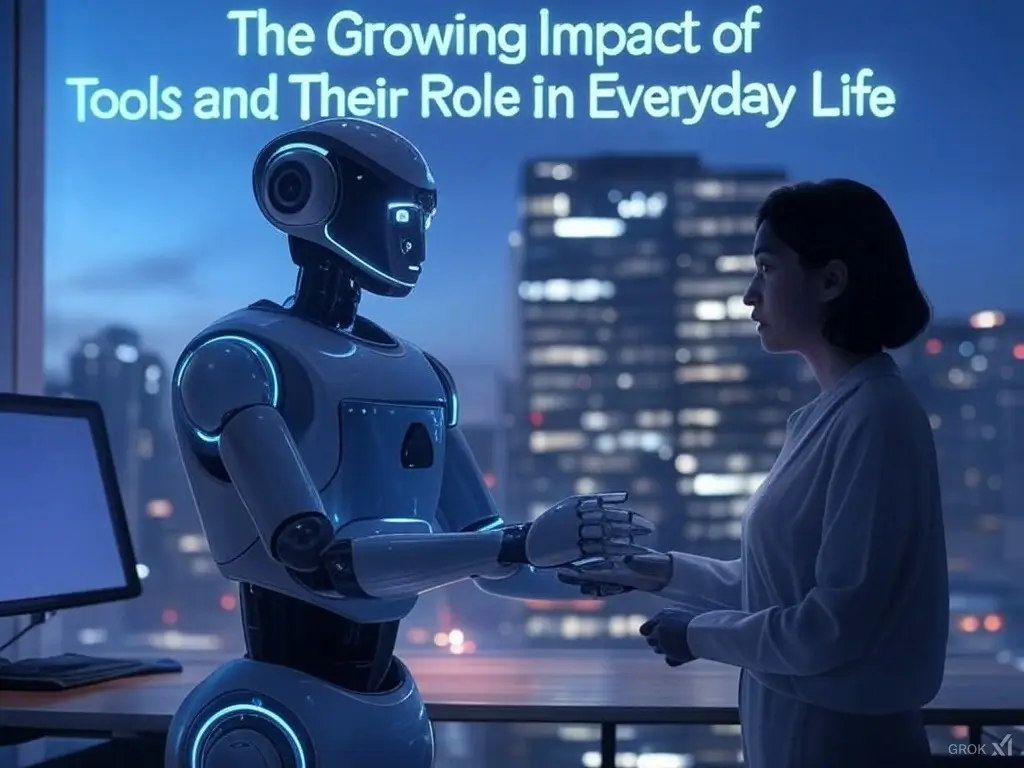The Growing Impact of AI Tools and Their Role in Everyday Life
Artificial Intelligence (AI) is no longer a futuristic dream—it’s here, reshaping how we live, work, and play. Imagine a world where AI tools brew your coffee just the way you like it, draft your emails before you wake up, or even design artwork for your next project. In 2025, AI tools have become our daily companions, from ChatGPT answering questions to Midjourney creating visuals that stun. This trending topic isn’t just for tech enthusiasts—it’s for everyone curious about how technology is evolving. So, what’s driving the rise of AI tools, and how are they changing our lives? Let’s explore their benefits, challenges, and what the future holds.
How AI Tools Are Sneaking Into Our Routines
Picture this: I woke up today, scrolled through Google Discover, and found an article about AI tools boosting productivity. Intrigued, I asked an AI chatbot to plan my day and write a quick poem for a friend. Within minutes, I had a schedule and a verse—tailored to me. At work, a colleague uses AI tools to craft presentations in record time, while my sister relies on them for recipe ideas. Students turn to AI tools to summarize books, and artists experiment with them for unique designs. These tools are everywhere, quietly becoming essential.
Studies show that AI tools save users up to 30% of their time on repetitive tasks. In 2025, we’ve seen launches like Fetch.ai’s ASI-1 Mini, a Web3-native model, and Elgato’s Marketplace Connect for OBS, making streaming easier. These examples prove that AI tools aren’t just for coders—they’re for creators, homemakers, and anyone looking to simplify life.
The Upside: Why We Love AI Tools
The appeal of AI tools is clear: they make things faster and spark creativity. For businesses, AI analytics predict trends, giving them an edge. For individuals, tools like Grammarly refine our words, while Canva’s AI turns novices into designers. I recently used an AI tool to fix a blurry photo from a trip—it looked professional in seconds. These moments free us up for what matters, like family time or hobbies.
In education, AI tools are game-changers. Platforms like Khan Academy’s AI experiments offer personalized tutoring, while teachers use them to grade papers or plan lessons. Creatives benefit too—musicians compose with Suno, and writers brainstorm with AI. It’s like having a co-creator who never sleeps, amplifying what we can do.
The Downsides: What We Need to Watch
But AI tools aren’t perfect. Ever relied on Google Maps so much you forgot how to navigate without it? That’s the risk here. I’ve caught myself hesitating to write emails without AI, worried they won’t be as sharp. Are we leaning too much on these tools? Experts say over-reliance could weaken critical thinking, especially for kids growing up with AI as a norm.
Privacy is another concern. Every time we use AI tools, we share data—sometimes without knowing where it goes. A 2024 report found 70% of users don’t understand how their info is handled. This year, an AI platform accidentally leaked user prompts, sparking outrage. It’s a trade-off: convenience versus control.
Ethics also loom large. AI can whip up deepfakes, fueling misinformation—like a viral video last month of a celebrity “speaking” words they never said. Jobs are at stake too. While AI creates roles like trainers or ethicists, it threatens others, like data entry. The World Economic Forum says by 2030, AI could displace 85 million jobs but create 97 million new ones. That’s a net win, but the shift won’t be smooth.
What’s Hot With AI Tools in 2025
As of February 2025, AI tools are making waves. AI companions like Replika are evolving into virtual friends, tackling loneliness with eerily human chats. In healthcare, Google’s Med-PaLM helps doctors diagnose, while wearable AI tracks vitals—saving lives, like a smartwatch that caught an irregular heartbeat recently. Gaming’s getting an AI boost too, with Nvidia’s graphics tech delivering jaw-dropping visuals, and Netflix curating playlists via AI.
Social media isn’t immune. On X, users debate AI’s role in content—some love it, others fear it’s silencing human voices. It’s a conversation worth joining, as AI tools shape what we see and share.
Where Are AI Tools Taking Us?
The future of AI tools looks boundless. By 2030, they could add $15.7 trillion to the global economy—more than China and India’s GDP combined. Self-driving cars from Tesla and Waymo are nearing reality, and home robots might soon tackle chores. I tried getting an AI to organize my closet virtually—it suggested more hangers, which wasn’t quite the fix I hoped for!
The trick is balance. I love how AI helps brainstorm this article, but these words are mine—my thoughts, not a machine’s. That’s the sweet spot: using AI to enhance, not replace, our human spark.
Wrapping Up: AI Tools Are Here to Stay
AI tools are transforming our days—saving time, igniting ideas, and pushing limits. They’re not without flaws, though, challenging us on privacy, ethics, and resilience. As I finish this, I’m struck by how an AI assistant gathered stats and refined my outline—yet it’s my voice shining through. That’s the magic of now: AI as a partner, not a stand-in.
Next time you use Siri, edit a photo, or watch an AI-picked movie, pause and notice the quiet revolution around you. AI tools are rewriting the rules, and we’re all part of the story. What do you think—friend or foe?

